Tips for climbing faster on the road
Climbing ports is often the weak point for most cycle tourists but also, the spice of cycling. We teach you some small guidelines that will help you to enjoy your favorite climbs more.
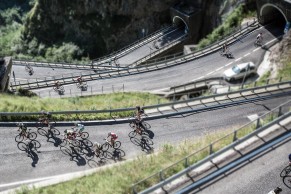
7 things you should keep in mind to climb better
When you ask most cycle tourists why they like cycling the most, climbing mountain passes almost always appear among the mentions. Whether it's because of the traditional imitation of what we see on television, with epic stages in the grand tours where cyclists face tremendous climbs or simply because of pedaling through charming places while overcoming mountains with only the strength of our legs.
It's ironic that, being among the preferences of those who practice this sport, climbing ports is also the weak point for most since, except for those who live in mountain areas and not even, it is a situation in many cases exceptional. However, taking into account a few aspects, it is easy to feel more comfortable when we face the ports that line the route we have proposed.
1. Pedal with joy
RECOMENDADO
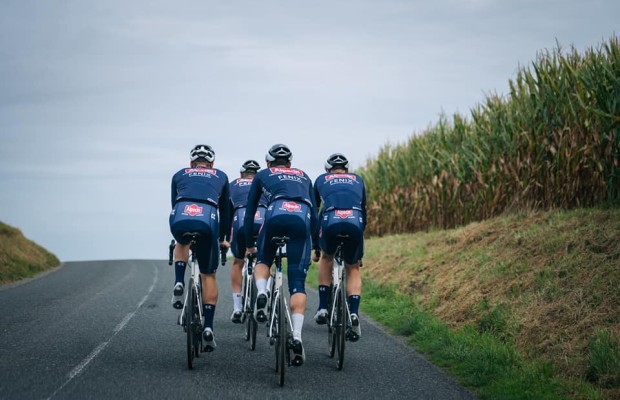
The cyclist's patience: how long, gentle training sessions build your best season

Tips for cycling in the rain

25 cycling gifts ideas to get it right

When do helmets have to be changed? Do they have an expiration date?

Some reasons to stay away from the road in winter
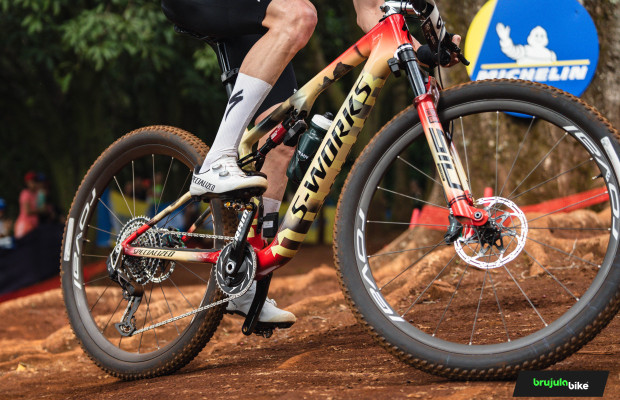
S-Works: what does it really mean and where does Specialized's most exclusive label come from?
We don't mean that you face the climbs with happiness, which also. It's more about our way of pedaling. With the developments available today on bikes, pedaling stuck makes no sense as it means inefficiently crushing the muscles.
 Maintaining a certain cadence, as agile as possible guarantees us to be able to easily regulate the rhythm of ascent and adapt it to our physical abilities. It is also clear that this is something that is not achieved overnight since an agile pedaling implies more demand for the cardiovascular system. There are also times when the inclination of the ramps prevents achieving that agile pedaling, but whenever we can, it will be effort that we will be saving.
Maintaining a certain cadence, as agile as possible guarantees us to be able to easily regulate the rhythm of ascent and adapt it to our physical abilities. It is also clear that this is something that is not achieved overnight since an agile pedaling implies more demand for the cardiovascular system. There are also times when the inclination of the ramps prevents achieving that agile pedaling, but whenever we can, it will be effort that we will be saving.
2. Weight is essential
Surely you have all heard of the infamous watts/kilo, a concept that refers to the power relative to the weight of a cyclist. Being a relative figure, it allows comparing the performance of cyclists of different physiognomy. The higher this value, the faster the person on the bike ascends.
Therefore, to climb better we have two ways: either generate more power during the time the ascent lasts, something that requires a lot of training effort or, much simpler, having to move uphill less weight.
 And we are not referring to the traditional obsession of the cyclist to have the lightest possible bike since in the worst case, if we talk about medium or high range bikes we will be moving in a range of kilo up, kilo down. No, it's more about the weight of the cyclist himself. You just have to take a look at the groups that go on the road to realize that, to whom more or less they have several kilos left. Imagine what it would be like to climb a port with a couple of bottles of water on your back.
And we are not referring to the traditional obsession of the cyclist to have the lightest possible bike since in the worst case, if we talk about medium or high range bikes we will be moving in a range of kilo up, kilo down. No, it's more about the weight of the cyclist himself. You just have to take a look at the groups that go on the road to realize that, to whom more or less they have several kilos left. Imagine what it would be like to climb a port with a couple of bottles of water on your back.
It is true that taking care of the diet, for those who are prone to gain weight and not to mention when they have entered their forties, can be hard. But it is undeniable that, when we talk about climbing better, it is the parameter that has the most influence on performance. 3 kilos less can make a significant difference that marks the line between enjoying an ascent or dragging ourselves.
3. Rhythm
Often, cycle tourists face the climbs as if they were simple slopes. Putting all their effort and seeing how their energy decreases as the ascent progresses. This way of facing the climbs only makes sense if we are in competition, or in a march, where losing the group can mean a significant extra time.
Even in those situations, if our forces do not reach the end of the climb we will not achieve the desired objective. That is why learning to regulate the rhythm throughout the ascent is vital, not only to climb faster, but also to enjoy the port.
 To be able to adjust the pace at which we ascend, few accessories are more useful than the power meter. Knowing the length of the port, estimating the duration of the climb and knowing what our power data is we can choose the specific watts that we can generate throughout the port.
To be able to adjust the pace at which we ascend, few accessories are more useful than the power meter. Knowing the length of the port, estimating the duration of the climb and knowing what our power data is we can choose the specific watts that we can generate throughout the port.
In case of not having a meter, the experience to interpret our sensations will be a degree. We will always try to maintain a rhythm that allows us not to climb in agony, watching our breathing so that it does not accelerate in the initial part.
4. Standing or sitting?
We all have in mind the image of the cyclist who contorts on his machine, making it dance from one side to the other while he overcomes the slope laboriously. At least that was until Lance Armstrong changed the paradigm and everyone discovered that maintaining a pedaling as similar as possible to the one we use on the flat is more efficient.
When we stand up many more muscles of the body are mobilized, even those that do not act in the advance of the bike but do mean a greater energy expenditure. We have to support the weight of our body with arms and legs while we move it to load the weight on the pedals. On the contrary, when pedaling seated the upper body practically does not mean an expense for the organism.
 The ideal, in terms of efficiency, is to try to climb as long as possible seated, standing on the pedals only to overcome some specific ramp of greater hardness or, at more or less regular intervals, to relax the muscles that intervene most when we pedal seated.
The ideal, in terms of efficiency, is to try to climb as long as possible seated, standing on the pedals only to overcome some specific ramp of greater hardness or, at more or less regular intervals, to relax the muscles that intervene most when we pedal seated.
When we stand up the ideal is that the pedaling rhythm varies as little as possible although the cadence, in most cases, always decreases a little, which usually forces us to lower a pinion so that the bike does not lose speed. In any case, we will be attentive to climb crowns if necessary and avoid getting stuck. It is also convenient to balance the bike in a synchronized way to reduce the vertical oscillation of the body with each pedal stroke and thus reduce the useless expenditure of energy.
5. Know the port
When we move through climbs where we usually roll we usually feel confident and we know at all times how far we can press or in which parts save forces. This does not happen when when we face unknown ports. Luckily, today there are many websites that offer us detailed data in the form of altimetry of practically any port that we can face.
An altimetry will provide us, in the first place, a global vision of the port. Distance and ascended unevenness must be the first reference that will allow us to get an initial idea of the time we are going to spend on the climb. However, this is a data that we must take with caution. We will have to look more closely at the graph to see if the slope is distributed homogeneously or the port has breaks.
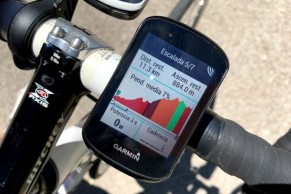
It is a common mistake to look only at the average gradient of each kilometer. But, you will agree, it is not the same to climb a constant kilometer at 5% as to do 500 m flat followed by 500 m at 10%.
A study of the altimetry will allow us to know in which parts we should save strength or that after the inhuman ramp we are going up we have a break. Fortunately, nowadays we can count on this information in many cyclocomputers and, for example, the current Garmin models include the Climb Pro function that shows us on screen the altimetric data.
6. Eat and drink
If the climb is short, it is not an essential parameter, beyond arriving at the foot of the climb well hydrated and fed. On the other hand, if we are talking about big mountain passes, it is something to watch throughout the climb.
Often, with the effort of the climb, many people forget about nutrition on the bike, which results in a significant drop in energy in the final part of the climb. We must continue to maintain the same nutrition and hydration routine that we had on the flat.
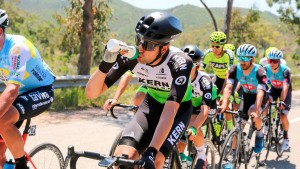
The problem with doing this while climbing is that the intensity of the effort does not always allow us to reach into our pockets for food, let alone try to swallow an energy bar. In this situation the best thing to do, without a doubt, is to resort to gels, which are quick to consume and easy to swallow.
In any case, we must get the body used to ingesting them in the middle of the effort to avoid possible stomach discomfort that could sour the ride.
7. Training
No matter how hard we try to climb a mountain pass, how much development we have to spare or how much care we take over every detail, if we don't have the necessary physical fitness, all we will achieve is to suffer a torment that, frankly, is far from being fun.
We like to say that cycling is enjoyable when you set the pace and not the road. Something that makes special sense when it comes to climbing.
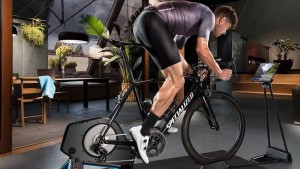
The better our physical preparation, the more margin we will have to face tougher climbs or to trace routes with several mountain passes. The extreme would be the usual routes of the cyclotourist marches in which the organizers try to show the best of each area and often show a mountain profile capable of scaring anyone.
From a cyclotourist's point of view, the training will be focused on having enough endurance to complete the long routes that are proposed in the routes that we face and, with regard to the mountain passes themselves, it will help us to move more watts of power for longer.
All that's left is to put these tips into practice by enjoying those climbs, whether they are close to where we live or those mythical passes we see on TV. And you, do you have any other tricks that you use to climb better? Tell us about it on our social networks.